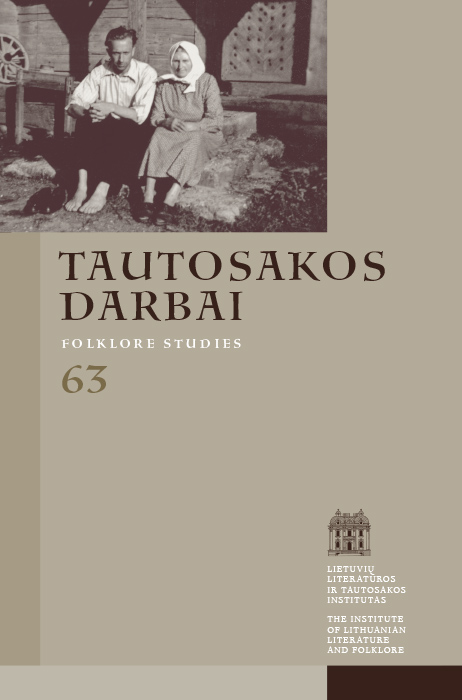Folklorinė baladė anapus žanrinio apibrėžtumo
Santrauka
Straipsnyje aptariami bendresni teoriniai klausimai, susiję su lietuvių folklorinėmis baladėmis. Remiantis ankstesnių tyrinėtojų bei straipsnio autorės darbais, šia proga siekiama apibendrintai pristatyti baladžių gyvavimo lietuviškojoje terpėje ypatumus, jų santykį su dainuojamąja tradicija. Prisimenami lietuvių baladžių tyrinėjimo (apskritai dainotyros) kontekstai, ryškinamas šių kūrinių paveikslas folkloristikos raidos perspektyvoje. Folklorinių baladžių temą siūloma gvildenti neapsiribojant žanro kategorija. Iš kaimyninių kraštų perimtos, tačiau savitos lietuvių baladės dainų universumui suteikia papildomų reikšmių ir verčių.
Atsisiuntimai
Nėra atsisiuntimų.
Skaitomiausi šio autoriaus(ų) straipsniai
- Modesta Liugaitė-Černiauskienė, Dosnus pasauliui, artimas Lietuvai , Tautosakos darbai: T 49 (2015)
- Modesta Liugaitė-Černiauskienė, Baladiškosios dainininkų (auto)biografijų paralelės , Tautosakos darbai: T 52 (2016)
- Modesta Liugaitė-Černiauskienė, Petro Zalansko sukakties proga – apie Dzūkų kultūros festivalį „Čiulba ulba“ , Tautosakos darbai: T 60 (2020)
